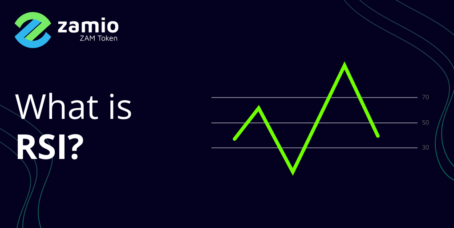The ingenuity of the developer community of cryptocurrencies has never come to disappoint with the creation of yield framing, a new phenomenon in decentralized finance (DeFi) led by Compound, a crypto project operating a lending and borrowing protocol launched in 2018. This article only scratches the surface of yield farming as it only provides an overview of this growing trend that took the DeFi space by storm in 2019.
Table of Contents
What is yield farming?
Yield framing is a term used in DeFi, a subsector in the crypto market where crypto owners deploy strategies to maximize their crypto gains by searching for the best platforms in the DeFi space that pays the highest returns to earn optimal passive income. The concept is fairly easy to comprehend but it is challenging and complex to execute for the average user. First, it is essential to understand DeFi and the importance of liquidity in this sector before revealing the platforms that yield farmers use to harvest their crops and the strategies they use to optimize their annual percentage yield (APY).
DeFi projects use a peer-to-peer network, smart contracts, and blockchain, a type of public ledger technology, to run decentralized financial applications (Dapps) with predefined rules and without a central authority. These applications or cryptocurrency projects aim to bring existing financial services in traditional finance to the blockchain to be utilized by the crypto market participants, but without a financial intermediary such as a bank, replaced by trusted public ledger and preprogrammed smart contracts. DeFi has successfully replicated the following traditional financial services:
- Forex or fiat currency trading replaced by decentralized crypto exchanges (application e.g Uniswap, Curve, and Balancer).
- Derivatives trading, replaced by decentralized derivatives marketplace (application e.g Synthetix and dYdx)
- Retail and investment banking, replaced by decentralized borrowing and lending protocols (application e.g Compound and Aave)
- Central banking replaced by minting crypto-backed stablecoins (e.g DAI) managed by Decentralized Autonomous Organizations (e.g MakerDAO)
- Financial insurance, replaced by decentralized default converge (e.g Etherisc).
- Portfolio management, replaced by decentralized finance products (e.g yearn fiance).
These Dapps are truly revolutionary and unveil the intelligence of the human mind. Uniswap, Curve, Balancer, Compound, to name a few, are Dapps wherein crypto holders search for passive income opportunities. These protocols rely heavily on liquidity or asset injections from users (crypto holders) to facilitate their platform operation and make their business model work and platform scale and grow. Liquidity is a fundamental component in the DeFi space, without which any market, whether it is centralized or decentralized, becomes insolvent and malfunctioning.
Therefore, DeFi protocols had to figure out ways to lure crypto owners to deposit their cryptoassets for as long as possible by introducing incentive programs that go behind what traditional financial institutions offer. A traditional retail bank, for example, benefits from the deposits of its clients by lending them to borrowers who are also the client of the bank. Some DeFi protocols, such as Compound and Aave, acting as a decentralized retail bank, replicate what traditional banks do with deposits through their lending and borrowing protocols.
These protocols can offer lenders an annual percentage yield or interest rate as high as 300% on specific cryptocurrencies deposits and sometimes higher. Not only that but also earning tokens from the hosting platform. Borrowers also have an incentive to borrow at high rates since they also receive tokens which can be sometimes more valuable than the interest they pay to lenders. Borrowers also take loans to deploy other yield strategies that will yield a higher return than the interest charged on borrowed funds. The protocol sets the interest automatically based on a predefined algorithmic formula that takes into account the law of supply and demand. As lenders’ supply increases for a specific crypto asset, the interest on the loan decreases and vice versa.
Yield framing strategies
One yield framing strategy that lenders deploy on lending and borrowing protocols, such as Compound, is depositing funds in a lending pool earning both interest and tokens. Then the same lenders borrow cryptocurrencies against their crypto deposit from the same platform and then deposit the borrowed money in the lending pool to earn more interest and tokens. This is called leveraged lending, a common strategy deployed by yield farmers to gain as much as possible and take full advantage of the DeFi system.
Lending and borrowing protocols are only one area in the DeFi arena where crypto holders earn a decent yield on their deposits. The token incentive program has also made it to decentralized crypto exchanges such as Uniswap and Balancer. Note that the process of depositing or locking crypto in the DeFi space to provide liquidity in exchange for tokens is called liquidity mining, which is a form of yield framing.
Crypto owners, who provide liquidity to the crypto exchange by locking their crypto in a liquidity pool for a specific trading pair (e.g (ETH/USDT), earn trading fees and Liquidity Provider tokens (LP tokens). The trading fees and LP tokens are distributed to liquidity providers in proportion to their share in the pool. Liquidity providers can withdraw their funds anytime without restrictions and move them elsewhere if a better deal exists on another platform.
LP tokens earned are not tradeable. They are proof of ownership or contribution in a liquidity pool. Upon withdrawal, they are burnt then the owner receives trading fees and platform tokens. However, if the holders do not want to withdraw the funds from the pool, they can use the LP tokens as collateral to borrow money from lending and borrowing protocols and then lend that borrow money back to the platform earning more tokens. So you see where this is going. You need to understand the business model and different rules and opportunities that each platform offers to users in order to unlock impressive returns.
Some protocols emerged as aggregators for the DeFi space to make the process more simple and convenient for users and help them filter the best available yield opportunities in the market. For example, users can use Instadapp to manage all DeFi protocols from one Dashboard. Yearn Finance is another blockchain yield service for DeFi that helps users maximize their return by lending their ideal cryptocurrencies balances.
Risks
With high rewards comes high risk. These are some of the risks that yield framers have to bear to chase after high returns in the DeFi space:
- Smart-contract risk – hacking, bugs
- Regulatory risk – compliance with laws
- Price movement- asset locked drop in price
- Impermanent loss
- Fraud – investing in a project established by bad actors
Summary
The primary purpose and incentive of yield farming are maximizing returns on ideal crypto-asset holdings by exploring passive income opportunities offered by DeFi protocols. Yield framers can earn interest or trading fees and token rewards simultaneously while moving investment around to collect the highest possible returns in the DeFi space. While the process is daunting for the average user, new protocols are emerging every day to make this process easier and user-friendly for the masses. Learning how each protocol functions in DeFi is one step forward to mastering yield framing and becoming a successful yield framer.








